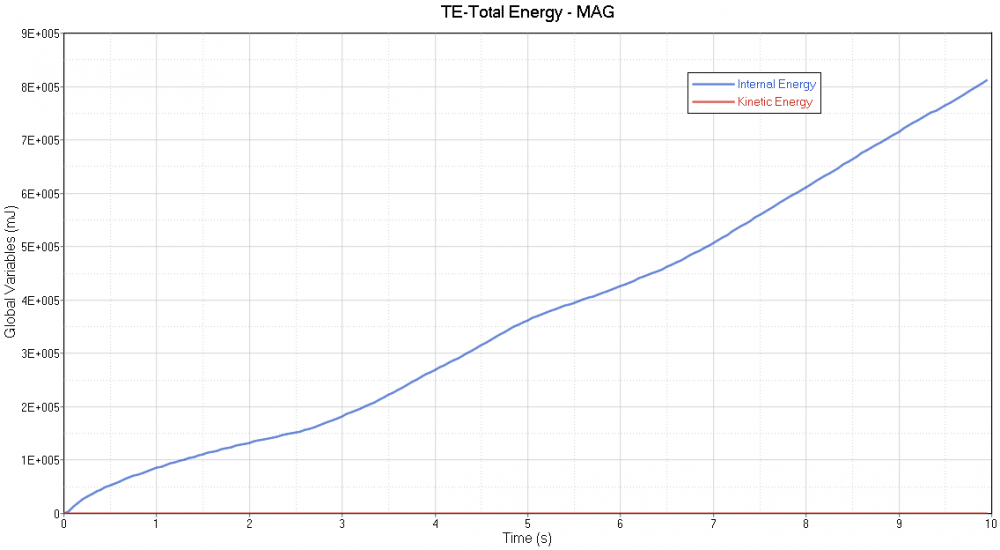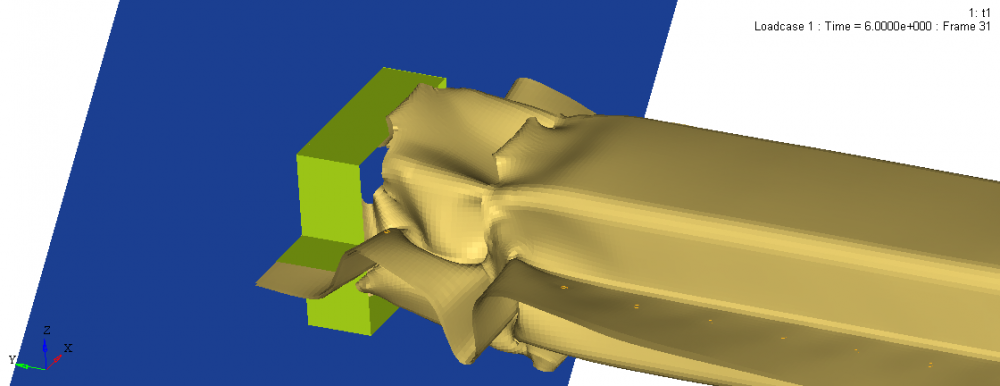Hello
As the relation between internal and kinetic energy are completely different, and I have observed during solving DM/M is not zero also. I think, my time step is less enough so, I set Tmin=1e-006, Tscale=0.9. How to adapt this kind of poblem in order to get the better results
My model is composed of the deformable tube, rigid wall, solid spot weld and fixture (green color) as picture below. In this analysis, I used the symmetry condition (half part) and defined the impose velocity (10mm/s) constantly at the back side of the tube.
If you need more information please tell me, Thank you
Sincerely
Nut
<?xml version="1.0" encoding="UTF-8"?>
<?xml version="1.0" encoding="UTF-8"?>